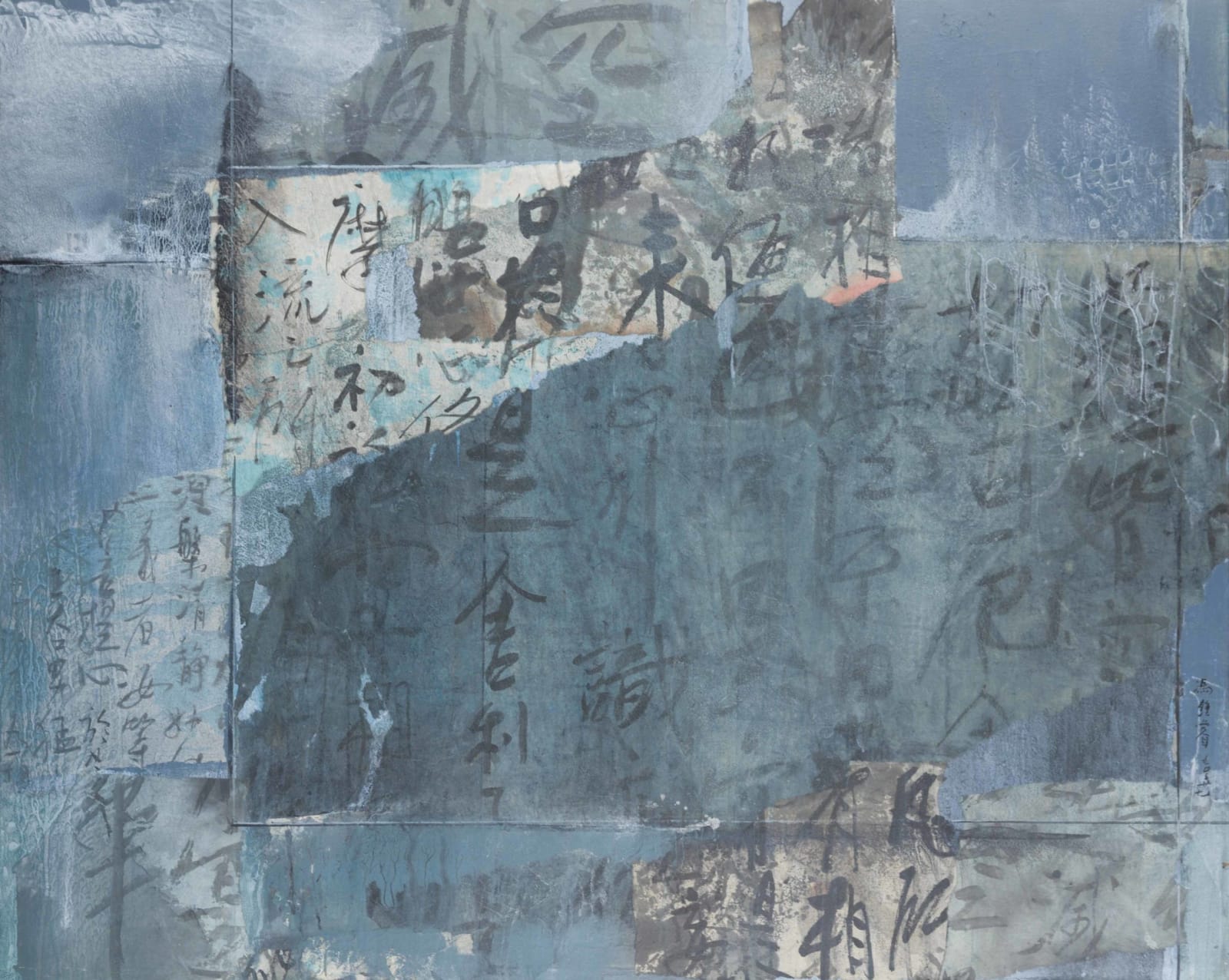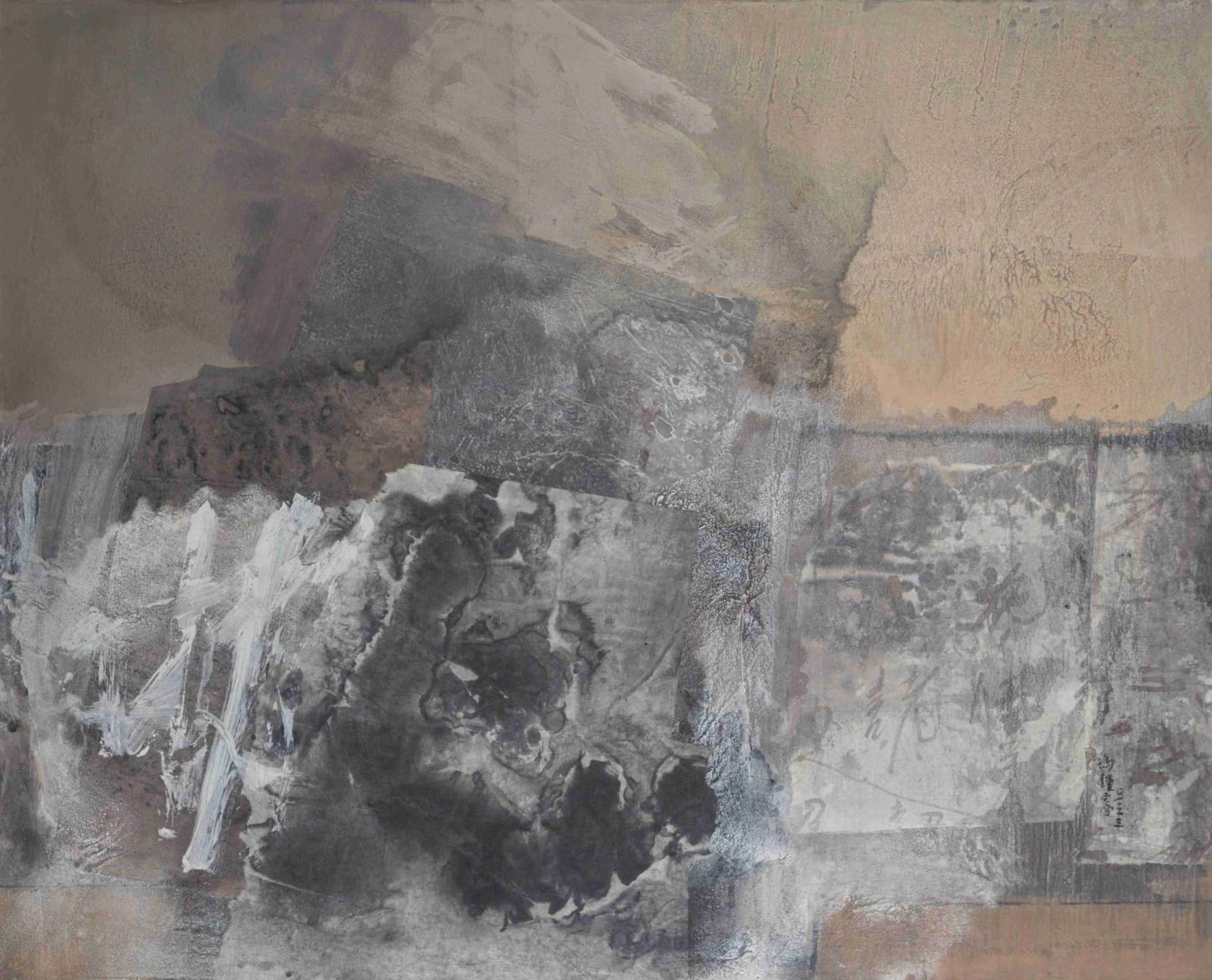Fong Chung-Ray's painting "2019-10-29" is featured in the NOC Whampoa cafe's art wall, and NOC interview the Fifth Moon Group pioneer on his creative journey.
Being born in Henan, China, and now living and working in San Francisco, how has this multicultural experience influenced your work?
Growing up in China and living in San Francisco, I cannot escape the profound influence of Chinese culture. I hope living abroad has helped broaden my views, and as a consequence, has made me more able to reflect on my own growth. So-called creativity is the process of moving forward artistic expressions whose foundations were laid by predecessors. Only with a rich and broad experience can you make better use of the existing foundation. The reason that I still live here in my old age is that I am used to the work environment.
Can you tell us more about ‘2019-10-29’, which is now on display at NOC Whampoa?
I am deeply attracted to the beauty of the forms in oracle bone script. In 2015, I took a trip to my hometown Henan, where I was born. I visited the local museum and bought several publications on oracle bone script. I started experimenting with different forms of oracle bone characters. Chinese characters, oracle bone script… for me, they are visual aesthetics and pictorial elements. I use a sharp instrument to scrape the forms on painted plastic sheets, then transfer them onto my painting through a reverse rubbing method.
Was there a process you followed for making ‘2019-10-29’, and how long does it take for you to finish each piece of work?
The time required for each painting is different. Once you have a concept, it could be challenging to execute it. Taming the materials requires skill, which only comes with practice.
What is your favourite time of the day to create?
I work during the day. A fixed schedule is my work habit.
Your art has recently been acquired by The Centre Pompidou in Paris, and can be found on the walls of private collectors, and in public buildings. Where does it make you feel most proud to see your work and why?
Collectors and art galleries acquire my paintings for different reasons. When a painting is sent out, it feels like marrying off a daughter. I hope that its new home is satisfactory and complete, and that people who will be looking at the painting will truly appreciate it, and gain some joy in their daily lives. The advantage of having the art displayed at the museums is that it will allow more people to see the painting.
You are also extremely well known for your ‘post year 2000’ series, which are usually a collage with mixed media, made with pain-staking detail. What got you started on this journey?
After 2000, I wanted to break away from traditional ink painting. I often notice the patterns of ancient buildings when I travel, and sometimes the broken walls contain endless rhythms and charms. I think the taming of materials requires new skills and techniques, so I think of ways to make the paint look like that.
Why is art important to you, and the world?
Personally, I think it’s important that I enjoy painting–it is also my only ability. For the world, the pursuit of beauty is the common aspiration of mankind, and there should be no conflict of interest.
Who is your favourite artist?
I admire the landscape painters of the Song Dynasty, and their paintings all move me. Among Western artists, I like Monet’s sunrise. He applied the ‘wrinkle method’ (texturing) of painting in his works, and it is not unreasonable to call it a Chinese painting. I also like Klee’s work.
According to ‘Xie He’s Six Methods’, Klee’s paintings are vivid and full of life, and the use of strokes and the composition are both done well. The New York School’s abstract expressionism also absorbed the essence of oriental art, and I turned to abstract painting under their influence.
What advice would you give to any young artists who are just starting out?
I hope they keep two points in mind. First, you have to devote yourself wholeheartedly to it, truly like it, and only when you paint well can you feel gratified. The second is to not follow others but create your own so-called personal style.
What’s your strongest childhood memory?
I have very fond memories of my childhood. The tradition of ‘kind father filial son’ and ‘friendly elder brother respectful younger brother’ allowed my youth to be filled with much happiness. It could have been even better without the chaos caused by the war.
If you weren’t an artist, what would you be?
I’ve been interested in human anatomy since I was a child, and my hands are pretty nimble. Maybe it shouldn’t be a big problem to be a surgeon.
Lastly, but by no means less important, are you a coffee lover?
Occasionally drink a cup – I like the fragrance.
About Fong Chung Ray
Artist Fong Chung Ray is a distinguished Chinese American painter who is best known for his unique abstract art style, one which explores new directions for Chinese paintings. In the late 1950s, he joined forces with a powerful group of progressive Chinese artists in Taiwan to create a distinctive visual language. In 1961, he joined the influential Fifth Moon Painting Society whose members met regularly to critique one another’s work. His painting has continued to evolve over the decades, following new and creative paths of abstract expression.
Learn more --
https://noccoffeeco.com/en/blog/fong-chung-ray-noc-artist-series/









